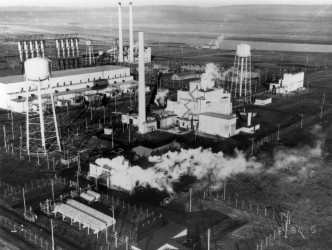Hanford Nuclear Project History
 The Department of Energy's Hanford Site is a 586-square-mile complex in the desert of southeastern Washington state. It is home to nine former plutonium production reactors and associated processing facilities built beginning in 1944. The reactors were used to produce plutonium, a man-made, radioactive element needed for atomic weapons. The reactors operated from World War II and through the Cold War. The last reactor was shut down in 1987.
The Department of Energy's Hanford Site is a 586-square-mile complex in the desert of southeastern Washington state. It is home to nine former plutonium production reactors and associated processing facilities built beginning in 1944. The reactors were used to produce plutonium, a man-made, radioactive element needed for atomic weapons. The reactors operated from World War II and through the Cold War. The last reactor was shut down in 1987.
Today, workers across the Hanford Site are involved in an environmental cleanup project of immense proportions. The plutonium production process generated billions of gallons of liquid waste and millions of tons of solid waste that is now being cleaned up.
The Vit Plant is a major element of the clean-up effort. It will safely process millions of gallons of radioactive liquid waste that remain in underground tanks.





